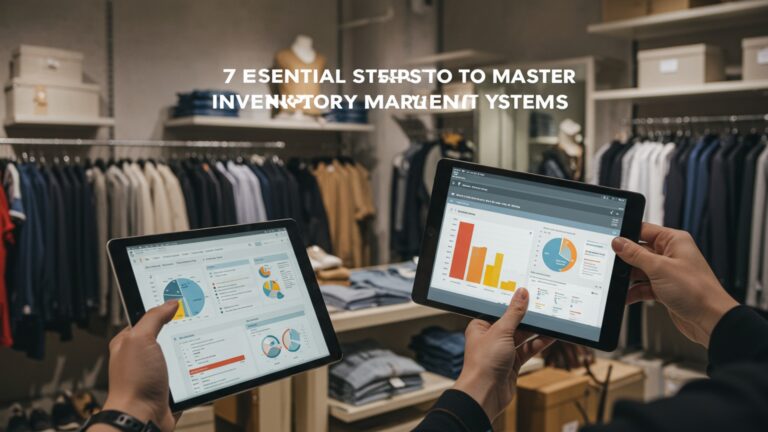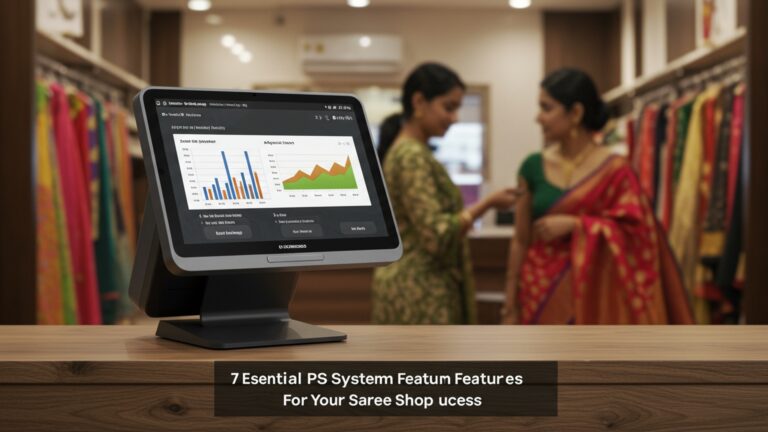7 Essential Strategies to Master Pharmacy Inventory Management Software
Pharmacies today grapple with escalating operational complexities, from unpredictable supply chain volatility, exemplified by recent global events, to the increasing demand for high-cost specialty medications requiring precise handling. Mastering pharmacy inventory management software is no longer merely about counting pills; it represents a critical strategic imperative for financial solvency, enhanced patient safety. stringent regulatory compliance. Modern systems leverage predictive analytics and real-time data to optimize stock levels, minimize waste from expired products. prevent critical stockouts, ensuring seamless medication access. This sophisticated approach transforms inventory from a liability into a dynamic asset, driving operational efficiency and mitigating risks inherent in a rapidly evolving healthcare landscape.
Understanding Pharmacy Inventory Management Software
At its core, pharmacy inventory management software is a specialized digital system designed to track, manage. optimize the stock of medications, medical supplies. other pharmaceutical products within a pharmacy setting. It moves beyond simple spreadsheets, offering advanced features for ordering, receiving, storing, dispensing. reconciling inventory. The primary goal is to ensure the right medications are available at the right time, in the right quantities, while minimizing waste, reducing costs. enhancing patient safety. This sophisticated tool integrates various aspects of pharmacy operations, from point-of-sale (POS) to electronic health records (EHR), creating a unified data ecosystem. For instance, a small independent pharmacy might use it to prevent stockouts of common antibiotics, while a large hospital pharmacy leverages it to manage thousands of different drugs, including controlled substances, across multiple departments.
1. Comprehensive Data Integration with Existing Systems
Mastering your pharmacy inventory management software begins with ensuring seamless integration with other critical systems in your pharmacy ecosystem. This isn’t just about connecting software; it’s about creating a unified flow of details that eliminates manual data entry, reduces errors. provides a holistic view of your operations. Key systems for integration include your Point-of-Sale (POS) system, Electronic Health Records (EHR) or Electronic Medical Records (EMR), wholesaler ordering platforms. even automated dispensing cabinets.
- Why it’s crucial: Without integration, data silos emerge. A prescription filled in your EHR might not automatically deduct from your inventory, leading to discrepancies. Similarly, sales recorded in your POS won’t update stock levels unless manually entered, which is prone to human error and delays.
- Real-world application: Consider a scenario where a patient’s prescription is entered into the EHR. With proper integration, this immediately triggers a check in the pharmacy inventory management software to verify stock availability. If the drug is low, an automated reorder suggestion can be generated. once dispensed, the inventory count is updated in real-time. This reduces the risk of dispensing errors and ensures accurate billing.
- Actionable takeaway: Prioritize integration capabilities when selecting or upgrading your pharmacy inventory management software. Work with your vendors to establish secure API (Application Programming Interface) connections. A common integration point is often achieved using standard protocols like HL7 (Health Level Seven) for healthcare data exchange or custom APIs for specific vendor platforms. For example, an API call to deduct stock might look like this:
POST /api/inventory/deduct
Headers: { "Authorization": "Bearer YOUR_TOKEN", "Content-Type": "application/json" }
Body: { "drug_code": "NDC12345", "quantity": 30, "pharmacy_id": "PHARMACY001"
}
2. Robust Data Accuracy Protocols
The adage “garbage in, garbage out” perfectly applies to pharmacy inventory management software. The efficacy of even the most sophisticated system is directly tied to the accuracy of the data it processes. Establishing robust protocols for data entry, validation. regular auditing is paramount to preventing costly errors, ensuring patient safety. maintaining regulatory compliance.
- Why it’s crucial: Inaccurate data can lead to overstocking (tying up capital, increasing waste), understocking (missing sales, delaying patient care), compliance issues (especially with controlled substances). misrepresenting financial performance. A miskeyed NDC (National Drug Code) or an incorrect quantity can have significant repercussions.
- Real-world application: A pharmacy once faced a significant discrepancy in their controlled substance inventory. After a detailed audit, it was discovered that a new technician occasionally miskeyed quantities during receiving, entering ’10’ instead of ‘100’ for a bulk order of a Schedule II drug. Implementing a double-check protocol, where two staff members verify quantities during receiving and reconcile against the purchase order within the pharmacy inventory management software, drastically reduced such errors.
- Actionable takeaway:
- Standardize Data Entry: Develop clear, concise standard operating procedures (SOPs) for all data entry tasks, including receiving, dispensing, returns. transfers.
- Implement Barcode Scanning: Mandate the use of barcode scanners for all inventory movements. This significantly reduces manual entry errors.
- Regular Cycle Counts: Conduct frequent, small-scale inventory checks (cycle counts) on specific sections of your inventory rather than annual wall-to-wall counts. This allows for early detection of discrepancies.
- Automated Validation: Configure your pharmacy inventory management software to automatically flag unusual entries, such as excessively high quantities for a single transaction or non-existent NDC codes.
- User Permissions: Restrict access to critical inventory functions based on roles and responsibilities to minimize unauthorized changes.
3. Leveraging Advanced Analytics and Reporting
Modern pharmacy inventory management software is more than just a tracking tool; it’s a powerful data analysis engine. Mastering its capabilities means moving beyond basic stock counts and diving deep into its advanced analytics and reporting features. These insights can transform reactive management into proactive strategic planning.
- Why it’s crucial: Without analytical insights, pharmacies operate in the dark, making decisions based on guesswork rather than data. Understanding sales trends, expiry patterns. supplier performance is vital for profitability, efficiency. patient care.
- Real-world application: A community pharmacy noticed a significant amount of expired flu vaccines each year. By using their pharmacy inventory management software‘s reporting features, they analyzed historical dispensing data, patient demographics. local flu season trends. They discovered that ordering based solely on previous year’s total volume was inefficient. The software’s predictive analytics suggested a more nuanced ordering strategy, leading to a 20% reduction in vaccine waste and improved availability during peak demand.
- Actionable takeaway:
- Generate Key Reports Regularly: Schedule and review reports on:
- Slow-Moving vs. Fast-Moving Items: Identify products that tie up capital versus those that generate quick revenue.
- Expiry Date Tracking: Proactively manage stock nearing expiration for returns or early dispensing.
- Supplier Performance: Evaluate lead times, fill rates. pricing from different vendors.
- Dispensing Trends: grasp seasonal variations, impact of marketing campaigns. changes in patient demographics.
- Cost of Goods Sold (COGS): Monitor profitability at a product level.
- Utilize Dashboards: Many pharmacy inventory management software solutions offer customizable dashboards. Configure these to display your most critical KPIs (Key Performance Indicators) at a glance, such as current stock value, pending orders. top-selling items.
- Conduct Root Cause Analysis: When reports highlight issues (e. g. , consistent stockouts of a particular drug), use the detailed transaction logs within the software to investigate the root cause—was it a purchasing error, a sudden surge in demand, or a supplier delay?
- Generate Key Reports Regularly: Schedule and review reports on:
4. Optimizing Reorder Points and Quantity
One of the most powerful features of pharmacy inventory management software is its ability to automate and optimize the reordering process. Mastering this strategy means moving beyond manual checks and leveraging the software’s algorithms to ensure you always have enough stock without over-ordering.
- Why it’s crucial: Incorrect reorder points (ROP) and reorder quantities (ROQ) lead to either stockouts (loss of sales, patient dissatisfaction) or overstocking (increased carrying costs, risk of expiration, reduced cash flow). Striking the right balance is essential for operational efficiency and financial health.
- Real-world application: A pharmacy implemented a new pharmacy inventory management software and initially used default reorder settings. They found themselves frequently running out of high-demand medications like common blood pressure drugs, while simultaneously having excess stock of less popular items. After analyzing historical sales data, supplier lead times. desired safety stock levels within the software, they customized the ROP and ROQ for each item. For instance, a fast-moving drug with a 2-day lead time might have an ROP set to 3 days’ worth of average sales plus a safety stock, while a slow-moving item might have a much higher safety stock to account for infrequent but critical demand. This led to a 15% reduction in stockouts and a 10% decrease in average inventory holding costs.
- Actionable takeaway:
- Calculate ROP and ROQ for Each Item:
- Reorder Point (ROP):
(Average Daily Usage Lead Time in Days) + Safety Stock - Reorder Quantity (ROQ): This is often the Economic Order Quantity (EOQ) or a fixed quantity based on supplier packaging/discounts.
Your pharmacy inventory management software should have fields to input and track these parameters.
- Reorder Point (ROP):
- Monitor Lead Times: Regularly update supplier lead times in your software, as these can fluctuate.
- Adjust for Seasonality and Trends: Don’t set ROPs and ROQs in stone. Use the software’s analytics to adjust them based on seasonal demand (e. g. , flu season, allergy season) or emerging prescribing trends.
- Utilize Safety Stock: Implement safety stock for critical or high-variability items to buffer against unexpected demand spikes or supplier delays.
- Batch Ordering: Use the software to consolidate orders to meet minimums or gain volume discounts from wholesalers, while still respecting individual item ROPs.
- Calculate ROP and ROQ for Each Item:
5. Implementing FIFO/FEFO Strategies
For any pharmacy, managing product expiration dates is not just about waste reduction; it’s a critical patient safety and regulatory compliance issue. Mastering your pharmacy inventory management software involves leveraging its capabilities to rigorously implement First-In, First-Out (FIFO) or First-Expired, First-Out (FEFO) inventory strategies.
- Why it’s crucial: Dispensing expired medication can have serious health consequences for patients and severe legal repercussions for the pharmacy. Conversely, allowing valuable medication to expire in storage represents significant financial loss. FIFO/FEFO ensures that products with the earliest expiration dates are dispensed or moved first, minimizing waste and ensuring patient safety.
- Real-world application: A busy hospital pharmacy struggled with managing the vast array of medications, often finding large quantities of expensive drugs expiring before use. They configured their pharmacy inventory management software to track not just lot numbers. also specific expiration dates upon receiving. When a new batch of a drug arrived, technicians were instructed to scan the expiration date. the software automatically prompted them to store it behind existing stock with earlier expiration dates. When dispensing, the system would suggest or require selection of the oldest (or earliest expiring) lot. This systematic approach, driven by the software, reduced expired product waste by 30% within a year.
- Actionable takeaway:
- Detailed Receiving Protocol: Ensure that every item received has its lot number and expiration date accurately entered into the pharmacy inventory management software. Use barcode scanning for these details if available.
- System-Guided Picking: Configure your software to guide dispensing staff to pick items based on FEFO. Some advanced systems can even integrate with automated dispensing cabinets to enforce this.
- Proactive Expiration Reports: Generate monthly or quarterly reports from your pharmacy inventory management software highlighting items nearing their expiration date (e. g. , within 3-6 months). This allows for proactive measures like returning to a wholesaler, transferring to another branch with higher demand, or prioritizing dispensing.
- Physical Segregation: While the software tracks, reinforce FEFO physically. Train staff to store newly received items behind older stock. For items nearing expiration, consider moving them to a designated “use first” area.
- Audit and Review: Periodically audit your shelves against the software’s expiration data to catch any discrepancies that might arise from human error.
6. Regular Staff Training and Adoption
Even the most sophisticated pharmacy inventory management software is only as effective as the people who use it. A critical, often overlooked, strategy for mastery is investing in thorough and ongoing staff training, fostering a culture of adoption. ensuring every team member understands their role in maintaining data integrity and maximizing system utility.
- Why it’s crucial: Poor training leads to incorrect data entry, underutilization of features, frustration. a general lack of trust in the system. When staff aren’t confident in the software, they may revert to manual processes, undermining the entire investment.
- Real-world application: During the rollout of a new pharmacy inventory management software in a chain of pharmacies, one branch initially reported numerous inventory discrepancies and high levels of staff dissatisfaction. It was discovered that training had been rushed. many technicians felt overwhelmed. The pharmacy manager then implemented a “super-user” program, designating a tech in each shift to become an expert and provide ongoing peer support. They also created a concise, role-specific quick-reference guide. This peer-led approach, combined with dedicated Q&A sessions, significantly improved data accuracy and staff morale, demonstrating that sustained training is key.
- Actionable takeaway:
- Structured Onboarding: Develop a comprehensive training module for all new hires that covers the core functionalities of the pharmacy inventory management software relevant to their role (e. g. , receiving, dispensing, returns).
- Ongoing Refresher Training: Conduct regular (e. g. , quarterly or semi-annual) refresher training sessions for all staff, especially when new features are rolled out or processes are updated.
- Role-Specific Training: Tailor training to individual roles. A pharmacist needs to interpret reporting and reconciliation, while a technician needs to master receiving and dispensing workflows.
- Create a Knowledge Base: Develop an internal wiki or simple document with FAQs, troubleshooting tips. step-by-step guides for common tasks within the software.
- Solicit Feedback: Regularly solicit feedback from staff on their challenges and suggestions for improving software usage. This empowers them and identifies areas for further training or system optimization.
- Highlight Benefits: Clearly communicate how mastering the pharmacy inventory management software benefits them directly (e. g. , less manual counting, fewer stockouts, easier task completion) and the pharmacy as a whole.
7. Continuous System Review and Optimization
Mastering pharmacy inventory management software is not a one-time achievement but an ongoing process. The pharmaceutical landscape, supplier relationships, patient demands. even the software itself are constantly evolving. Therefore, a strategy of continuous review and optimization is essential to ensure your system remains effective, efficient. aligned with your pharmacy’s strategic goals.
- Why it’s crucial: Without regular review, processes can become outdated, inefficiencies can creep in. the pharmacy may miss out on new features or best practices. The software’s settings, such as reorder points, may become inaccurate as dispensing patterns change, leading to suboptimal inventory levels.
- Real-world application: A large retail pharmacy chain used their pharmacy inventory management software effectively for years. But, after a significant shift in local demographics and the introduction of several new generic medications, they noticed an increase in both expired stock and missed sales opportunities. Upon a quarterly review of their software’s performance, they identified that their reorder parameters hadn’t been updated in over two years. By re-evaluating and adjusting safety stock levels, lead times. demand forecasts within the software, they were able to realign their inventory with current realities, significantly improving their inventory turnover rate.
- Actionable takeaway:
- Schedule Regular Audits: Conduct quarterly or semi-annual audits of your pharmacy inventory management software settings, reports. overall usage. Review:
- Reorder points and quantities for key medications.
- Supplier lead times and performance data.
- Expiry date tracking accuracy.
- User permissions and access levels.
- Integration health with other systems.
- Stay Updated with Software Releases: Regularly check for updates, patches. new features from your pharmacy inventory management software vendor. New functionalities can often address existing pain points or unlock new efficiencies.
- Benchmarking: Compare your inventory metrics (e. g. , inventory turnover, carrying costs, stockout rate) against industry benchmarks. Use your software’s reporting tools to track these KPIs over time.
- Process Improvement Cycles: Use the data from your software to identify bottlenecks or inefficiencies in your inventory workflow. For example, if a report consistently shows delays in receiving, it might indicate a need to refine your receiving protocol or renegotiate with a supplier.
- Cross-Functional Team Review: Involve key stakeholders from different pharmacy functions (pharmacists, technicians, purchasing managers) in these review processes to get diverse perspectives and foster collective ownership.
- Schedule Regular Audits: Conduct quarterly or semi-annual audits of your pharmacy inventory management software settings, reports. overall usage. Review:
Conclusion
Mastering pharmacy inventory management software is not merely about adopting technology; it’s about embracing a proactive mindset to optimize every aspect of your operations. The strategies we’ve discussed empower you to move beyond reactive stock adjustments, enabling precise forecasting and strategic purchasing. My personal tip for success is to consistently leverage the software’s data analytics features, treating them as your pharmacy’s financial and operational compass. For instance, by closely tracking prescription fill rates against stock levels, you can preemptively address potential shortages of critical medications like specific antibiotics or chronic disease therapies, preventing patient inconvenience and ensuring continuity of care. In an era of dynamic pharmaceutical supply chains and evolving patient demands, harnessing these tools means securing your pharmacy’s resilience and profitability. Consider the current trends in healthcare, where rapid access to medications is paramount; effective inventory management directly translates into enhanced patient trust and a stronger community presence. This isn’t just about cutting costs; it’s about elevating patient safety and streamlining workflow for your entire team. Take the actionable step today to fully integrate and continuously refine your approach to inventory management, transforming your pharmacy into a model of efficiency and care. The investment in mastering this software will yield invaluable returns, propelling your business forward with confidence. Learn more about pharmaceutical supply chains and their global impact.
More Articles
Unlock 7 Powerful Benefits From Pharmacy Management Software Solutions
7 Essential Benefits of a Pharmacy POS System for Your Business Growth
7 Smart Strategies to Optimize Pharmacy Inventory with Management Software
Learn 8 Smart Ways POS Software Streamlines Inventory Management
FAQs
Why is accurate data entry so crucial for effective pharmacy inventory management?
Precise data entry is the backbone of your inventory system. Without it, all the software’s advanced features become unreliable, leading to inaccurate stock counts, poor ordering decisions. potential financial losses from waste or missed sales.
What’s the secret to setting optimal reorder points and par levels?
It’s a blend of historical sales data, current demand, supplier lead times. your storage capacity. The software helps by providing insights. regular review and adjustment based on real-world usage are key to avoiding both overstocking and stockouts.
Which reports from the inventory software should I prioritize looking at?
Focus on reports that show slow-moving items, expiring products, high-volume sellers. inventory turnover rates. These give you actionable insights into what’s working, what’s not. where you can optimize purchasing and reduce waste.
How does integrating inventory software with other pharmacy systems really help?
Integration streamlines operations significantly. It automates stock deductions when items are dispensed, reduces manual data entry errors. gives you a single, unified view of your pharmacy’s entire workflow, saving time and boosting accuracy.
My staff struggles with new software. How vital is thorough training?
It’s absolutely vital. Even the most sophisticated software won’t deliver if your team isn’t comfortable and proficient using it. Proper training ensures consistent data entry, efficient workflows. maximises your investment in the system.
Why bother keeping up with software updates for my inventory system?
Updates aren’t just for new features; they often include critical security patches, bug fixes. performance enhancements. Staying current ensures your system remains secure, efficient. compatible with evolving industry standards.
Can this software actually help me manage my relationships with suppliers better?
Definitely! It provides data on purchase history, supplier lead times. product costs, giving you leverage for negotiations. You can identify reliable suppliers, track their performance. make more informed decisions about where and when to order.






